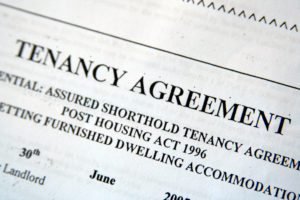Did you know that employees are likely to lose 44 minutes every week due to poor internet connectivity?
It’s annoying when the internet disconnects or slows down abruptly for no particular reason? Slow internet or no WiFi signal could have you pulling your hair out, but luckily there’s a way around the problem. If your internet connection is giving you a headache, then the solution can be as simple as boosting WiFi signal.
In this post, we’ll be looking at some foolproof ways to boost your WiFi signal, so that you can enjoy an uninterrupted internet connection.
Update Your Router
Yes, just like your computer or smartphone, your router needs an update once in a while. When you update your router’s firmware, you improve its performance and stability. Updating your router also protects it from malware attacks, which are pretty rampant these days.
You’d think that malware attacks are only for computers and mobile devices, but your router can also be a victim. Malicious apps may infect your router with malware and spread it to other devices while limiting your bandwidth. In severe cases, you’ll have to get a new router if your routers get infected with malware.
Eliminate the WiFi Squatters
Does your WiFi network have a few uninvited guests? Maybe it’s time to cut them out because they may be compromising your internet speeds. It’s normal to have a few WiFi leeches, especially if you have fast and reliable WiFi.
The more devices you have on the WiFi network, the slower your internet speed will be because you’re sharing your bandwidth. If you have a neighbor who’s doing some heavy online gaming using your WiFi, then expect your internet to be very slow.
Also, just because your neighbors have WiFi, doesn’t mean they won’t want to use yours. To be on the safe side, encrypt your WiFi with a strong and unpredictable password. Also, only give the WiFi to people you trust and not your neighbors.
Choose the Best Spot for Your Router
Where you place your WiFi router directly affects the strength of your WiFi signal. Do your best to keep the router away from any metal, because metal adversely affects the WiFi signal. You should also keep it away from electrical wires or other devices with electromagnetic fields, which interfere with the WiFi signal.
Objects made of wood, plastic, or foam also affect the WiFi signal, but to a lesser extent than metal. If the router serves the entire house, then place it roughly in the center of the house on a high platform.
Upgrade Your Antennas
Most routers have a tiny pair of antennas on their side or one on each side. Though small, these antennas get the job done, but not as well as most people would like. However, you can always get a new pair of antennas and replace the ones on your router.
You have several types of antennas to choose from, but you only need one type, and that’s the “rubber ducky” antenna. The “rubber duck” antenna or rubber duck aerial is a flexible antenna mostly found on portable radios. There are many models of these antennas, so you really have to do your homework before you settle for one to get the best one.
Also, the only way you can boost your WiFi signal is if your new antenna has more gain than the current one. Always check the antenna’s specification before buying to know whether it’s an upgrade from the current one.
Get a WiFi Booster
A WiFi booster is a small pocket-sized device that boosts your WiFi signal by acting as an extension of the original network. You can use the term WiFi booster interchangeably with WiFi repeater or WiFi extender. Though some may argue these are different devices, they essentially do the same thing.
WiFi repeaters have a smaller range as compared to WiFi boosters. Repeaters are great for household needs, where you just need the WiFi to reach some parts of the house. If your original WiFi signal is weak, then you should get a booster instead.
A good booster or repeater should set you back no more than $100. Setting up these devices is simple and will only take a few minutes. Repeaters work with all routers and ISPs, so that’s something you shouldn’t have to worry about.
Switch Your WiFi Channel
Perhaps the WiFi channel you’re on is what’s limiting your internet speed. Think of a WiFi channel as a particular lane on the highway. While some lanes have free-flowing traffic, others have traffic jams, and vehicles on those lanes are barely moving.
A WiFi router can broadcast over multiple channels, but most routers have their channel set on default, which is either channel 1 or 6. If you transmit a lot of data packets through one channel, then there’s bound to be a clog on the channel, just like a traffic jam on a particular lane.
In most countries, you can choose from six channels that don’t overlap. All you have to do is find the channel with the least data traffic and switch to it. You can use a WiFi analysis app like Netspot that can also boost wifi signal on Mac.
Switch the WiFi Frequency
To get the most out of your WiFi router, switch the frequency from 2.4 GHz to 5 GHz. 5 GHz works better for smaller rangers for faster speeds. However, not all routers support 5 GHz, but if yours does, consider switching to 5 GHz and see how it works for you.
A Weak WiFi Signal Is Optional: Consider Boosting WiFi Signal
If your internet is acting up because the WiFi signal is weak, then all you need to do is boost the WiFi signal and you’re good to go.
Clearly, boosting WiFi signal isn’t rocket science and, in most cases, won’t cost you a thing.
Make sure you check out our other articles for more insightful reads.


